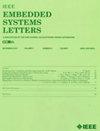动态融合:资源高效多模态机器学习推理
IF 2
4区 计算机科学
Q3 COMPUTER SCIENCE, HARDWARE & ARCHITECTURE
引用次数: 0
摘要
多模态机器学习(MMML)应用程序在推理阶段结合不同模态的结果来提高预测精度。现有的MMML融合策略使用静态模态权重分配,基于在训练阶段确定的传感器模态的内在值。然而,在实际场景中,输入数据的扰动会影响推理阶段模态的内在价值,降低预测精度,消耗计算和能量资源。在这项工作中,我们提出了DynaFuse,这是一个动态和自适应融合MMML推理来设置模态权重的框架,考虑了输入数据质量和传感器能量预算的运行时参数。我们通过结合不同模态的设计时内在价值和运行时外在价值来确定模态的洞察力,以分配更新的模态权重,同时满足精度要求和节能要求。与最先进的静态融合方法相比,DynaFuse方法在人类活动识别和压力监测的典型MMML应用中实现了高达22%的预测精度提高,平均节省了34%的能源。本文章由计算机程序翻译,如有差异,请以英文原文为准。
DynaFuse: Dynamic Fusion for Resource Efficient Multimodal Machine Learning Inference
Multimodal machine learning (MMML) applications combine results from different modalities in the inference phase to improve prediction accuracy. Existing MMML fusion strategies use static modality weight assignment, based on the intrinsic value of sensor modalities determined during the training phase. However, input data perturbations in practical scenarios affect the intrinsic value of modalities in the inference phase, lowering prediction accuracy, and draining computational and energy resources. In this letter, we present dynamic fusion (DynaFuse), a framework for dynamic and adaptive fusion of MMML inference to set modality weights, considering run-time parameters of input data quality and sensor energy budgets. We determine the insightfulness of modalities by combining the design-time intrinsic value with the run-time extrinsic value of different modalities to assign updated modality weights, catering to both accuracy requirements and energy conservation demands. The DynaFuse approach achieves up to 22% gain in prediction accuracy and an average energy savings of 34% on exemplary MMML applications of human activity recognition and stress monitoring in comparison with state-of-the-art static fusion approaches.
求助全文
通过发布文献求助,成功后即可免费获取论文全文。
去求助
来源期刊

IEEE Embedded Systems Letters
Engineering-Control and Systems Engineering
CiteScore
3.30
自引率
0.00%
发文量
65
期刊介绍:
The IEEE Embedded Systems Letters (ESL), provides a forum for rapid dissemination of latest technical advances in embedded systems and related areas in embedded software. The emphasis is on models, methods, and tools that ensure secure, correct, efficient and robust design of embedded systems and their applications.
 求助内容:
求助内容: 应助结果提醒方式:
应助结果提醒方式:


